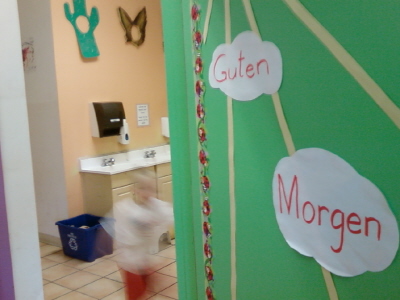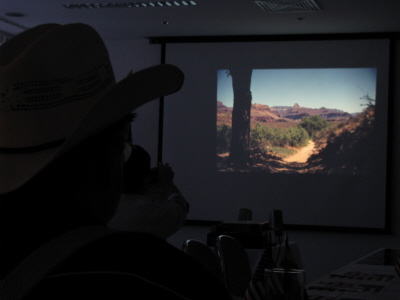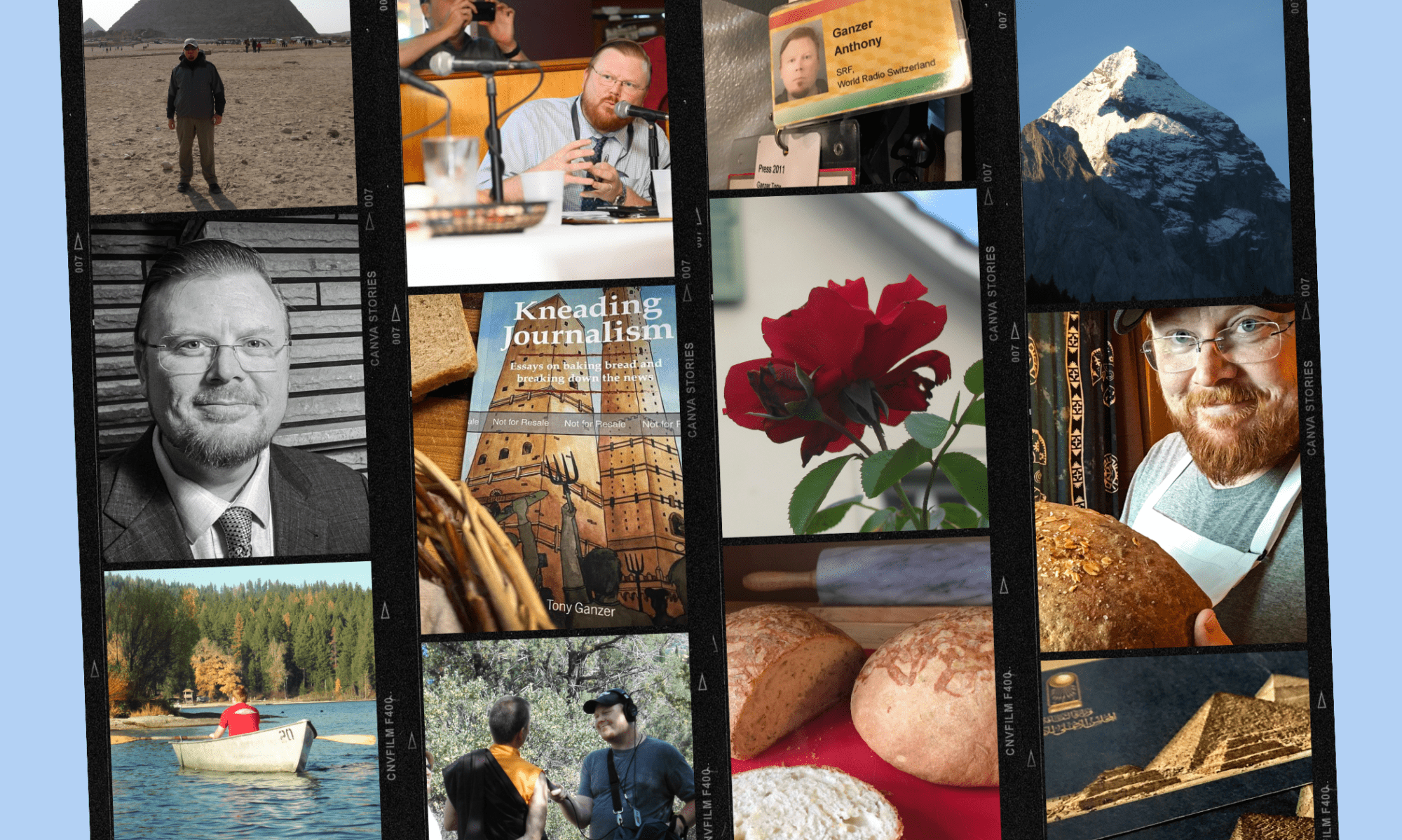In Basel, public transit is trying hard to be tri-national
Remembering the Zug Massacre, ten years on
Live debrief with Alex Helmick, WRS afternoon host: “Ten years ago today Switzerland was rocked by tragedy. Lone gunman Friedrich Leibacher disguised himself as a police officer, and marched into the Zug cantonal parliament building. In the second story Parliament meeting hall Leibacher fired dozens of rounds killing 14 people and injuring many others before killing himself.
The incident was the worst shooting in Swiss history, and led to the changes in government security and left perhaps a permanent impression on the Zug community. WRS’s Tony Ganzer was in Zug today. Now, it has been 10 years now since the Zug Massacre, as it is called. Is Zug still in mourning would you say? Could you tell walking through the city that this is 10 years after an attack of this magnitude?
Tony Ganzer: Well, Zug is picturesque, and the cantonal parliament is perched near the lake. Traffic and people carried on as you would expect on any other day, but there were two major external signs that this is still a community remembering. The first, was a collection of things at the parliament building the cantonal flag of Zug sitting at half-staff, lit candles were placed in a circle on the buildings steps. Fresh flowers were placed on a glass memorial outside the building.
The second sign was hard to hear at first. Many communities ring bells at the top of the hour but Zug, today at noon let them all ring out. The tone was soft at first, so I climbed into the old town, up a steep hill toward the Zug Castle.
Some of the most vigorous bell ringing sang from St. Oswald’s Catholic Church. A group of kids asked me what I was doing, and why the bells were ringing for what seemed to be forever. I told them it was in honor of the victims of the shooting 10 years ago. They said they understood.
AH: So even the kids at least knew of the attack 10 years ago. Could you assume then the population at large is at least aware of what’s happening today, I assume so?
TG: Well, for that question I turned to the man ringing St. Oswald’s bells, Markus Jeck.
He says this is very present for the people here. That attack is not completely forgotten. He says he walks to that building, and he looks around and he knows what happened there. And he thinks..that people will never forget.
Jeck rushed back to the church office after the bells subsided. But he thinks it is good they ring.
He says for him the bells..they’re machinery. They are something to alert people to religious services. But also they ring when someone has died, but also like now, to remember, with all the bells ringing to tell people something terrible happened. This is a remembrance of the those who were killed in the attack 10 years ago, he says. We do it as a reminder, in general, of the violence that day. All the bells ring out every year on this day for 15 minutes.
And with that Jeck continued sweeping the church grounds, but still conscious of what the day means to the community..
AH: And, Tony, at the parliament building itself, it was supposed to be open day for the public, a remembrance day for the public. What was the mood like there in the parliament building?
TG: The building as I said is perched by the lake, and near it..is a large bird pen, so bird song fills the area. Inside things are very quiet, though. A large bouquet is in the main meeting hall, a single rose was on the back table. A crucifix on the wall, small stained-glass portraits and the cherubs painted on the ceiling with Swiss flags give a peaceful air.
AH: Were there any people visiting?
TG: Well, a few. Some lawmakers had come in the morning, I was told, and some citizens. Standing near the hall was cantonal parliament president Wreni Vicky. And I spoke with her, and she says the Zug citizens are very close to this attack.
VICKY: The real Zuger Bevölkerung (people of Zug), they remember it very good. I can see it—I bekam (received) letters for the day now, or SMS, and E-mails, and they are very near to it.
TG: Vicky was a cantonal lawmaker in 2001, and was in the room during the attack. She says many things changed after that day.
VICKY: Yes, it changed quite a lot because now we have all the police. We have controls everywhere. It was the same year as Swissair grounding, and 9/11. I think it is not only the Attentat from Zug, who changed security, but it’s different since ’01.
TG: Attentat means “attack” in German. Vicky says it is true the attack pushed Swiss thinking from that of a small, safe nation, into one part of a bigger world.
VICKY: It’s different and I cannot…if you have been in such a room, life changes. For me it’s the life before the Attentat, and the life after the Attentat. And all people should know this: we have a good living, we are rich, we can afford everything. And you should be happier.
TG: But, she says, she is still coping with the effects of that day.
VICKY: Before, I didn’t have fear. And now, I’m sure, if you are in a room or a restaurant somewhere, it can happen, something. And I didn’t know this feeling before.
TG: That was Zug cantonal parliament president Wreni Vicky. But Alex, perhaps the most permanent sign of a changed Switzerland is at the door. The solid wooden door clicks shut with its strong, mechanical lock. And the automatic glass doors don’t open until the wooden one closes. All for security.
AH: Thank you, Tony.
TG: Thank you.
Tale of two Zurichs: exploring Langstrasse and Bahnhofstrasse
In Zurich there are two main streets, just minutes from each other but worlds apart. The Bahnhofstrasse is among the world’s most expensive shopping miles. Langstrasse has battled a reputation as a haven for prostitution and crime. World Radio Switzerland’s Tony Ganzer brings us this report from each street, and tells how development could be changing Zurich’s famous neighborhoods.
And then, he takes a look back into the history of each street and how it reflects a dichotomy in Zurich, even today.
Part 1:
Part 2:
It really is true that a few minutes can take a person to another world. Take Bahnhofstrasse for example.
The street begins here at the main train station, erupting from a grand archway into a broad street lined with pedestrians and trees.
It ends pretty much here..at Lake Zurich.
“Bahnhofstrasse is, and I don’t want to exaggerate, the most important street in Zurich concerning retail shops, concerning jewelry, concerning also banks,” says Markus Hünig, the president of the Bahnhofstrasse association.
“The street has a reputation to be a very good street. If you walk through you may realize that the most expensive stores are more toward the lake,” he adds. “And from the railway station you also have more shops also for young people, not as high a price level.”
The street is packed with department stores or niche clothing stores. Every few meters there is another shop with high-priced watches lining its windows.
There’s a massive toy store.
And high priced candies from the quintessentially Swiss shop Sprüngli.
But if you head to the other side of the train station, it’s a different Zurich.
“This used to be a terrible corner, but it is getting brighter every day,” says Susanne Seiler, who owns a café and boarding house near Langstrasse.
“Langstrasse has a terrible reputation, and I guess it has to do with the prostitution. The barracks are up the street here, so there were comfort women here,” she says.
Seiler has lived in this neighborhood for 13 years, and says there have been problems here. She says drunks, drug-dealers and prostitutes have been regular fixtures on Langstrasse.
“When I first came..this green house was full of prostitutes,” she says, pointing, and referencing a nearby house. “There were 40 rooms in there, and let’s say in 36 of them there were prostitutes.”
Seiler says the neighborhood has slowly been recovering from its seedy past. Residents are investing again in renovating buildings. Students and artists are creating a different atmosphere. International grocers, clothing stores, even a school, are pushing Langstrasse away from its bad reputation.
“With all these young people coming over here just to have a good time and everything, the seediness is disappearing. The seediness also comes just from the places being old, and not much money being pumped into it maybe,” Seiler says. “But all this is slowly but surely changing, because like I say, it’s so central, how could they not want it, and do something with it?”
The two famous or infamous streets of Zurich have held their reputations for decades, but things could be changing. Hundreds of millions of francs are being spent on a new development project around the train station, which could bridge the gap between the streets; a gap deeply rooted in Zurich’s history.
Bahnhofstrasse now almost embodies the essence of luxury shopping. Shops offer watches for 5, 20, 40,000 francs in windows displaying the latest in high fashion. But it wasn’t always so.
“When the street was founded, as a street, it was a so-called…Fröschengraben…[for] frogs,” explains Hünig. “And then the first hotels were incorporated, and the railway was brought to Zürich with the station where it is now. And then they thought ‘we should have a street between that railway station and the hotels..’ and they thought of Paris, with the boulevards, and they tried to do the Bahnhofstrasse.”
Hünig says the street became Zurich’s main roadway, connecting rail traffic and boat traffic on Lake Zurich.
“When the street was built in the 1860s it was mainly thought to connect the new main train station to the port on the lake side,” says Daniel Kurz, a city historian. “Langstrasse is absolutely on the opposite of Bahnhofstrasse. It is the district behind the main station, which in Zürich means it is also sort of a harbor district, with all the things of accompanying a harbor district, including prostitutes, but also including immigrants.”
Kurz says Langstrasse and Bahnhofstrasse have always developed differently. Commercial business focused on the road near the train station toward the lake, while blue collar workers and immigrants stayed in the lower income neighborhood.
The two worlds, so to say, were separated by the railway, and the Sihl river.
“Langstrasse was also the place where the demonstrations would take place, and very often in earlier times, people used to feel that the district to the left of the Sihl river, being the working class district, was very different from the city,” Kurz says. “So when a demonstration crossed the bridges from Langstrasse to Bahnhofstrasse, this very often meant police intervention or other sorts of trouble, because it meant transgressing symbolic borders.”
Kurz says Langstrasse was a main hub in developing Switzerland’s labor movement, with Vladimir Lenin even spending time there. But with a river, and army barracks isolating the neighborhood, the situation declined.
Rolf Vieli is known as Mr. Langstrasse. He’s a community activist, who grew up in the neighborhood. He says it used to be a classic blue collar neighborhood, but prostitution came in the 1970s with liberalization of sex laws.
The neighborhood always had a reputation for opposition, or encouraging revolutionary thoughts, he says.
But according to historian Daniel Kurz, reputations are not always deserved.
“I remember reading in a memoirs of a Jewish activist of the 1930s, Regina Kägi-Fuchsmann, who says, in her youth before WWI, she would never set foot into that neighborhood because she was sure it was full of revolutionaries with guns and bombs,” he says. “Those prejudices have always been alive and have never been true.”
Even with projects to bring more business and lower rents to Langstrasse some residents are resistant. They say the street has a unique character, and history, and they don’t want to lose that.
Prague, a city of culture
Phoenix maintains partnerships with cities around the world as a way to promote cultural and economic ties. The sister cities program includes partnerships with places in Mexico, Canada and Japan. But it’s a relationship with the city of Prague—the capital of the Czech Republic—that is the focus of our next story. KJZZ’s Tony Ganzer traveled to Europe on a fellowship, and found a city rich in culture and history that few Phoenicians know much about, even though there are close Arizona ties.
Continue reading “Prague, a city of culture”Germany’s Cultural Investment in Arizona

In high school, many students are given a chance to take a foreign language. But for parents who want their children to speak a second language sooner, or to speak a less common language, they often turn to private schooling. And one such language immersion school in Tucson has caught the attention, and funding, of the German government. KJZZ’s Tony Ganzer reports.
Continue reading “Germany’s Cultural Investment in Arizona”A Wild West-Inspired Germany

Arizona’s sights and cities attract a broad range of people each year, in large numbers. The National Park Service estimates the Grand Canyon alone welcomes almost 5 million visitors annually. Some of these people are Europeans, drawn to the Wild West image of America. KJZZ’s Tony Ganzer found a club of Arizona fans in Dresden, Germany where the Old West is spurring a new kind of thinking.
Continue reading “A Wild West-Inspired Germany”







